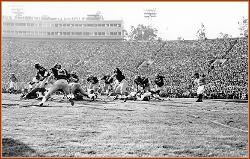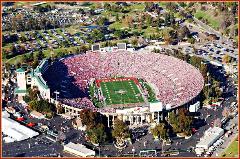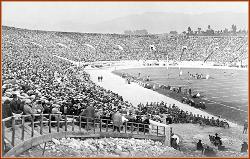Jawaharlal Nehru Stadium
The Jawaharlal Nehru Stadium in New Delhi, India, was built by the Government of India in
1982. The massive facility is an all-purpose sports arena hosting football (soccer) and
other sporting events, as well as large-scale entertainment events, such as concerts by
India’s leading musical acts and entertainers. The facility seats 100,000 spectators, and
up to 130,000 for concerts. The Jawahar Lal Nehru Stadium also houses the headquarter
offices of the Indian Olympic Committee. India hosted the first Asian Games in March
1951 in New Delhi and again the 9th Asian Games in 1982 when the Jawaharlal Nehru
Stadium was first constructed.
2010 Commonwealth Games Controversy
The track and field events of the 2010 Commonwealth Games could be held at a new stadium, and not at the showpiece Jawaharlal Nehru
Stadium, Indian Olympic Association (IOA) president Suresh Kalmadi stated in November 2006, "If the renovation costs of the Jawaharlal Nehru
Stadium prove to be too steep, we are considering a new facility to hold the track and field events in the Kalindi Kunj area (in south Delhi)."
"Since the Jawaharlal Nehru Stadium is the largest stadium, it will still get to host the opening and closing ceremonies of the games,' he said after
releasing the draft report titled 'Venues, Games Infrastructure and Village for Commonwealth Games Delhi 2010."
The Nehru Stadium was built for the 1982 Asian Games and has hosted several international events, including the 2004 World half-Marathon,
Junior Asian Athletics in 1991 and Permit Meets besides other national meets. The synthetic track of the stadium is the only such facility in the
national capital and has thus been overused. Kalmadi, who chairs the games' organising committee, also said that a new pool for aquatic events
would be built for the games, as the existing infrastructure did not meet international standards. "As the present Shyama Prasad Mukherjee
Aquatics Complex does not meet the required standards as pointed out by the Event Knowledge Services (EKS) of the Commonwealth Games,
we intend to build Thyagaraj Sports Complex (for aquatics)," Kalmadi said.
The proposed Thyagaraj Sports Complex, near Nehru Stadium, will also have a new synthetic track for athletics training besides the aquatics
infrastructure. Kalmadi said that new venue would have easy accessibility to the Metro train system. The other new infrastructure to be added to
the Nehru Stadium complex would include a new outdoor venue to host the lawn bowls competition, an indoor 3,000-seater stadium for netball, a
3,000-seater indoor stadium for weightlifting and a media centre. Apart from this, the Indira Gandhi Indoor Complex will have a new indoor
stadium with a seating capacity for 8,000-10,000 people to host wrestling events and Siri Fort Sports Complex will host the badminton and squash
events. Table tennis competition will be held at a new 5,000-seat capacity indoor stadium within the existing Delhi Development Authority's
Yamuna Sports Complex in east Delhi. The venue will also double up as a training ground for other disciplines.
Existing facilities in the city that can be renovated or upgraded to international specifications have also been identified and bids will be invited to
carry out the required work. These include Major Dhyan Chand National Stadium (hockey), Indira Gandhi Sports Complex (gymnastics, cycling
and new media centre), Karni Singh Shooting Range (shooting) and Delhi University Grounds (rugby 7's). The venue for the Games Village had
not yet been finalised but was likely to be near Akshardham Temple, near the Yamuna river in east Delhi, said Kalmadi. Kalmadi presented the
37-page draft report to the Group of Ministers (GoM) led by Human Resource Development Minister Arjun Singh here Monday. He said that
consultations would be held with the sports ministry and the final draft would be tabled before the GoM Nov 21. The IOA president said that the
five additional sports disciplines, including cricket, requested for by the IOA could be hosted with the existing infrastructure.







